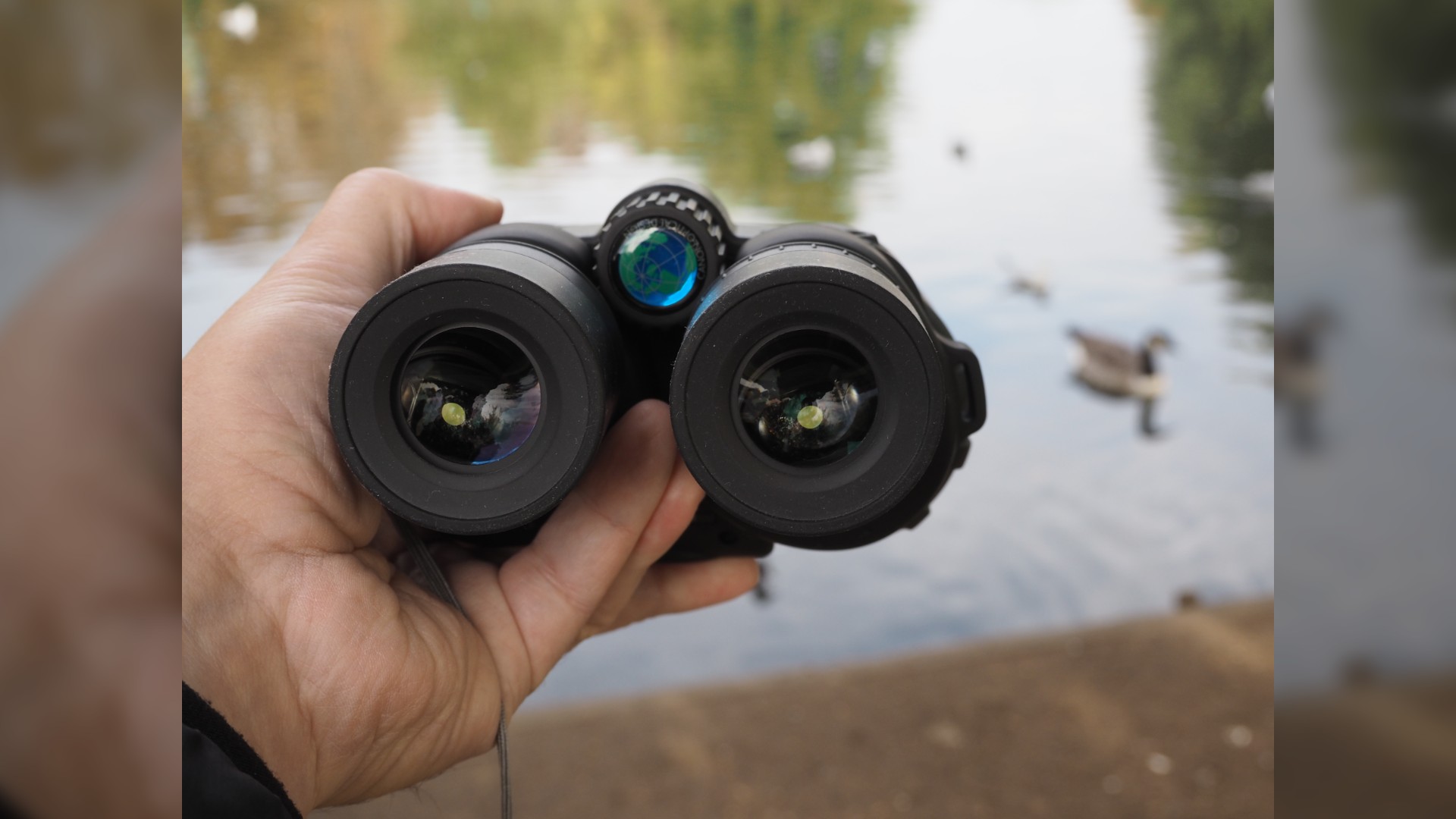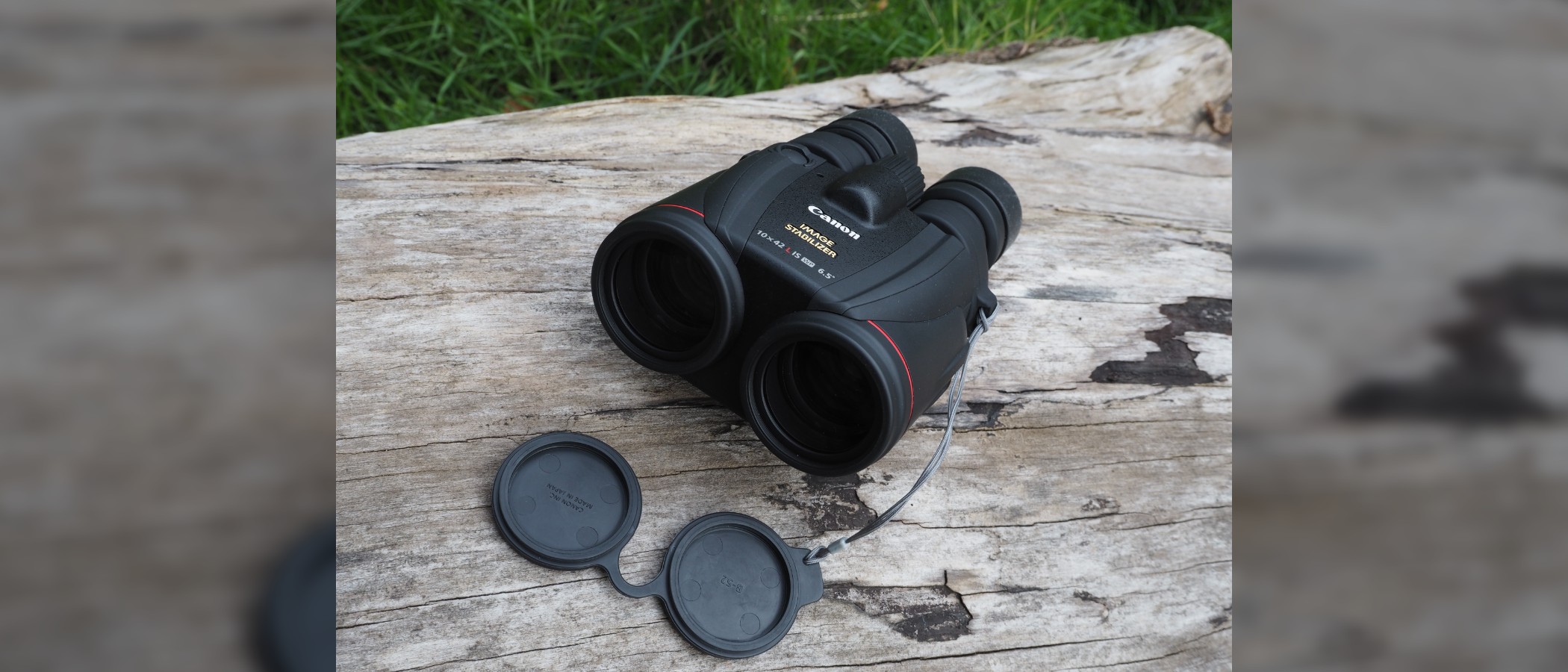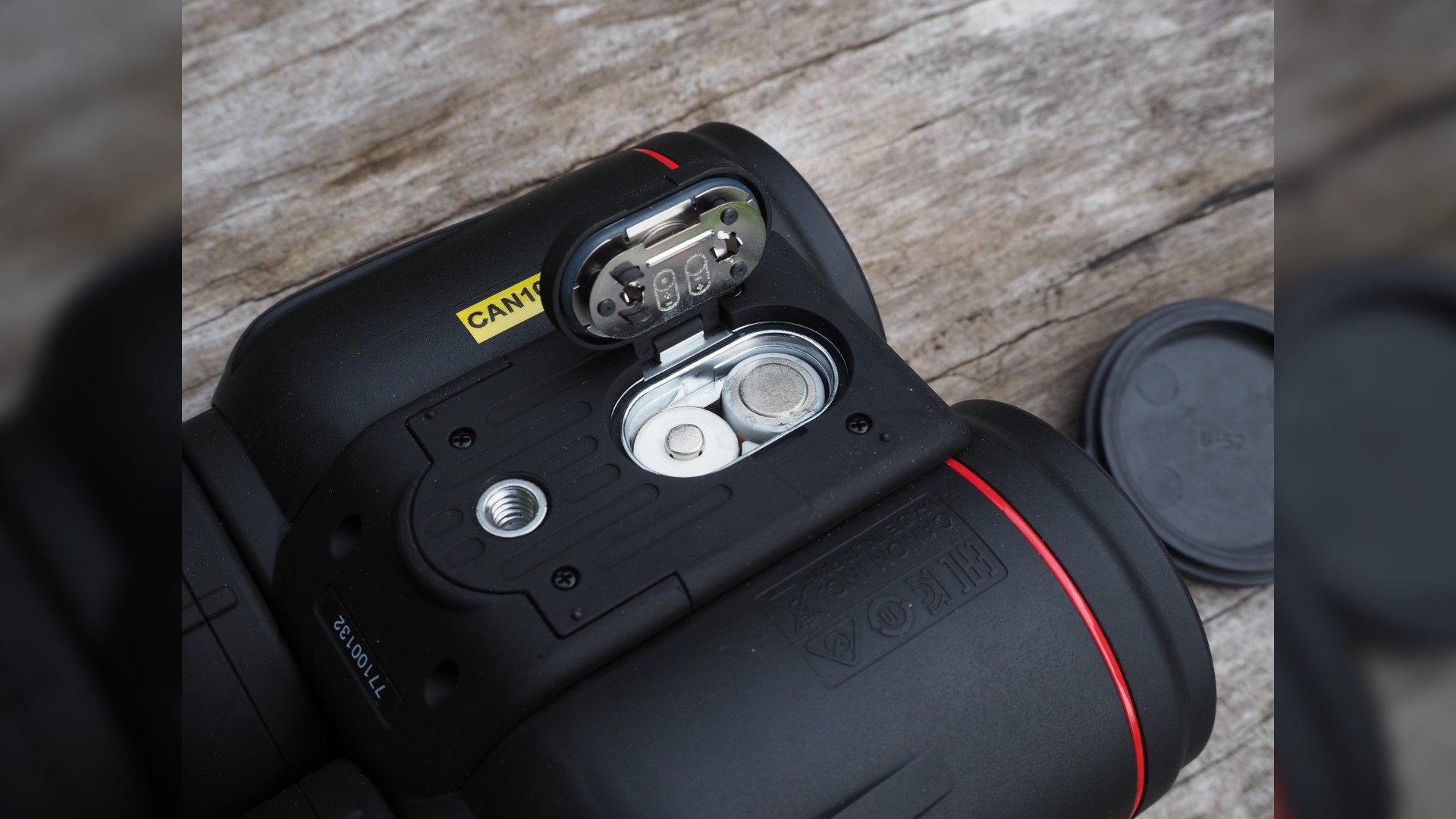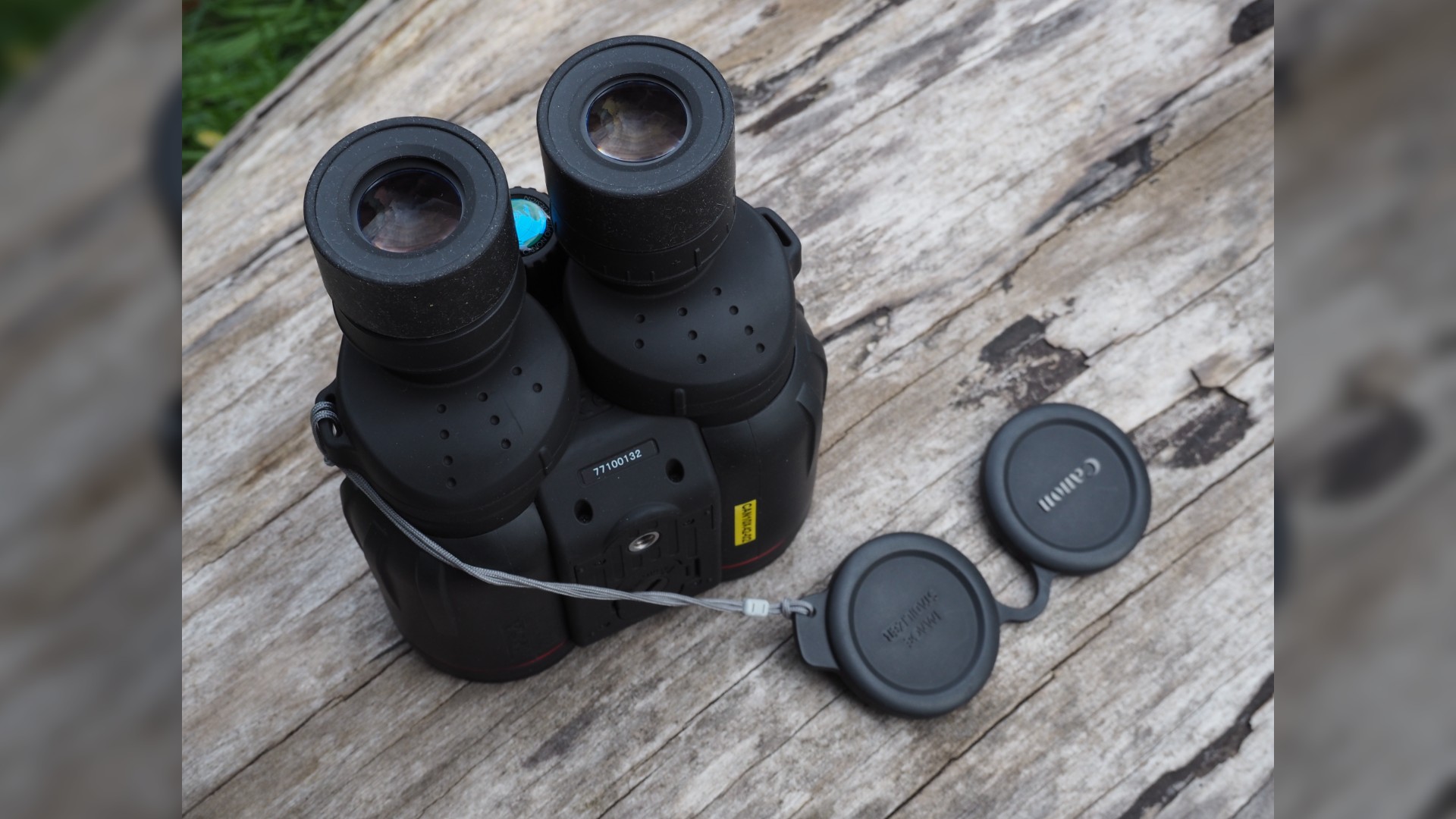Live Science Verdict
If you want an image-stabilized pair of binoculars, you’re likely going to be buying a Canon. The contemporary design of this model makes it look like a Star Wars prop but, while its bulbous body design won’t be for everyone, the reason for the shape — its battery-powered image-stabilization — is effective, and will impress most users. At $1500 though, you're paying a lot for the judder-eliminating feature.
Pros
- +
Canon’s first image-stabilized binos to offer waterproofing
- +
Powerful magnification and top-tier optical quality
- +
Shake-free observation at maximum magnification
- +
Feels weighty and easy to hold
Cons
- -
Priced at a premium
- -
Heavy to hold for extended periods
- -
Needs AA batteries for image stabilizer
Why you can trust Live Science
Scope out these Canon 10x42L IS WP which come with image stabilization tech to help you keep your eyes on the prize.
Magnification: 10x
Objective lens diameter: 42mm
Field of view at 1000m: 113.7 yards / 104 meters
Closest focusing distance: 8.2 ft./2.5m
Eye relief: 16mm
Weight: 2.2lbs / 1.1kg
Dimensions: 5.4 x 6.9 x 3.4" / 17.6x13.7x8.5cm
Powerful magnification married to a large objective lens is the ultimate goal when it comes to making the best binoculars. However this can result in a large and unwieldy device, which in turn amplifies the effects of any hand shake or wobble. This leaves you with a juddery image.
With the Canon 10x42L IS WP the manufacturer is trying to offer us the best of both worlds. You get that powerful magnification and large objective lens, but can view relatively ‘judder-free’ when manually activating the gyro sensor that compensates for any exterior movement of the device.
It’s also worth noting that this is Canon’s first ever waterproof binoculars, the batteries for which are hidden beneath a rubber flap at the rear, which can be tightened shut or loosened by inserting a penny in the indented slot. While a 10x42 combination is standard in terms of spec and one offered by many rivals, Canon is still fairly unusual in offering built-in anti-shake in addition to this magnification, and the result is a higher cost. Is the spec and performance of the Canon 10x42L IS WP worth the additional expense? We tested these binoculars thoroughly to find out.
Canon 10x42L IS WP: Features
If you’re wondering, the ‘IS’ in the model name denotes ‘image stabilization’ and the ‘WP’ indicates this model is waterproof. That image stabilization comes from a combination of the built-in battery powered image stabilizer and ultra low dispersion glass elements used in the build. These are designed to correct any possible distortion and avoid purple fringing between high contrast elements in an image. One common example of this is the dark branches of a tree against a blue cloudless sky being traced with a distracting purple outline. We didn’t see this at all with the Canon 10x42L IS WP during our testing, so the tech is doing its job.
This pair of binoculars seems to have most image aberrations well under control, going by our own testing. What’s more, they’re fog-proofed and o-ring sealed to prevent moisture getting into the device — protective features that we would completely expect to find for the premium retail price.
Though ultimately designed for distant magnification, the Canon 10x42L IS WP offers a closest focusing distance of 2.5 meters, while most competitors typically offer the ability to focus as close as 1.5 meters. It’s a minor flaw considering that you’re rarely using binoculars to view subjects that close.
Get the world’s most fascinating discoveries delivered straight to your inbox.
You can achieve a wide and steady view with the Canon 10x42L IS WP, which makes them suitable for watching sports and outdoor shows. However, they are great binoculars for stargazing too, achieving a better view of Moon craters, as well as wildlife and bird watching and marine observation, thanks to that anti-shake feature. We’d suggest they’re a bit bulky for comfortably sightseeing and travelling with, for which the more pocket friendly Steiner Safari Ultrasharp 10x26 would be a better bet.
Canon 10x42L IS WP: Design and handling

The distinctive Canon 10x42L IS WP feels reassuringly solid when gripped in both hands. The 2.2lbs weight, with batteries inserted, means you’ll be able to hold them steady, even before you press the image-stabilization button.
One gripe we have with the design lies with the eyepieces. While they feature length-adjustable eye relief and a dioptric ring, they also have a spongy rubber surround designed to aid comfort. A side effect of this is that it seems to attract dust and detritus, which in turn sticks to the rubber over time. The binoculars themselves have a soft rubber feel to the casing, with a few ridges provided on the lens barrels to aid grip.
You don’t get the roughened, or dimpled, surface that is found on some competing models to aid your grip. Despite this, the Canon 10x42L IS WP feels good to hold, and is effective in wet conditions. While the built-in image stabilization is designed to negate the need for a tripod, there is actually a standard screw thread provided at the base, should you wish to use a tripod at any stage.
Canon 10x42L IS WP: Performance
As noted in our intro, the image stabilization system features tiny gyros claimed to detect the slightest movements, with a built-in microprocessor controlling a vari-angle prism to correct the refraction angle of incoming light. This all happens in real time and is imperceptible while the device is held up to your eye, leaving you with the smooth image that results. Add to this a wide 65° angle of view, plus a long 16mm eye relief, and any possible vignetting effect — the darkening of the edges of your view — is minimized.
To activate the ‘IS’ feature, as on the recently reviewed Canon 10x20 IS binos, you simply press a recessed, Smarties-sized button on the ridged surface of the device. With this pressed the image-stabilization does actually work, with any wobble immediately eliminated and a smooth and steady view being the result.
But whether it’s worth the hefty price tag still being asked for this veteran model is another question entirely. Especially when the size and bulk of the Canon 10x42L IS WP enabled us to hold them fairly steady, and get great viewing results, without having to always deploy the image-stabilization feature.
Should you buy the Canon 10x42L IS WP?
With its built-in image-stabilization, crystal clear observation, and wobble-free images these binoculars are clearly a premium choice. But that comes at a massive $1500 price.
For this sort of outlay alternative models from Leica and Zeiss, world renowned for their class leading optical excellence, must also be taken into consideration. However these don’t offer on-board gyro sensors so, ultimately, it comes down to how much you value rock solid performance. If a stable image is the be-all-and-end-all for you, then the Canon 10x42L IS WP are a fantastic choice.
If this product isn't for you?
While there are plenty of alternatives from other manufacturers that offer a 10x magnification, there are very few that offer anti-shake with it. If you don’t need the image-stabilization, there is the reasonably-priced Olympus 10x42 Pro. If you don’t require as much ‘poke’ then it’s also worth checking out Canon’s own alternative in the Canon 10x20 IS binocular, which is more compact and less expensive, in part due to its smaller objective lens. It still features image stabilization, denoted by the giveaway ‘IS’ letters in the model name.
If you’re looking for other premium models from top tier brands including Leica and Zeiss we’d recommend the Leica Noctivid 10x42 or the Zeiss SFL 40. OK, so these rivals don’t offer battery powered anti-shake functionality, but they do boast lens quality and crystal clear optical performance like no other, thereby making them a birdwatcher’s dream.
Gavin has over 30 year experience of writing about photography and television. He is currently the editor of British Photographic Industry News, and previously served as editor of Which Digital Camera and deputy editor of Total Digital Photography.
He has also written for a wide range of publications including T3, BBC Focus, Empire, NME, Radio Times, MacWorld, Computer Active, What Digital Camera and Rough Guide books.
He also writes on a number of specialist subjects including binoculars and monoculars, spotting scopes, microscopes, trail cameras, action cameras, body cameras, filters, cameras straps and more.






